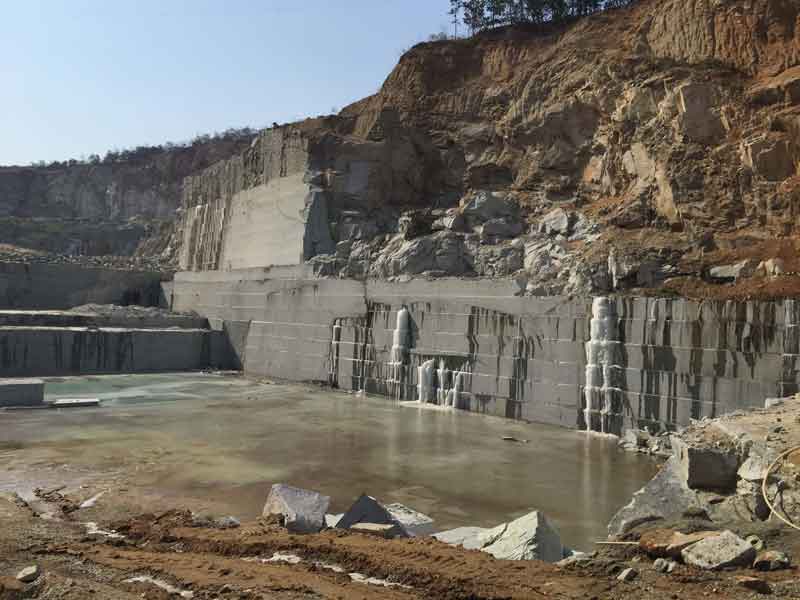Granite Quarries in South Africa Wonders: Discovering the Quarry Landscape
Granite Quarries in South Africa Wonders: Discovering the Quarry Landscape
Blog Article
Uncovering the Rich History and Sustainable Practices of Granite Quarrying
As we depend on the precipice of revealing the elaborate tapestry of granite quarrying, a journey via time discloses not simply the physical act of drawing out stone but additionally the social and historic importance woven right into the really material of this practice. From the old origins that laid the foundation for modern-day quarrying methods to the lasting practices that are shaping the future of this sector, each sculpt mark on granite surface areas tells a tale waiting to be unearthed (granite quarries in south africa). The heritage of granite quarrying stretches far beyond mere removal; it is a testimony to human ingenuity, durability, and the long-lasting allure of this magnificent stone
Old Origins of Granite Quarrying
Dating back to ancient civilizations, the method of quarrying granite has actually been an essential component of human background and architectural innovation. The earliest evidence of granite quarrying dates back to old Egypt, where massive pyramids and complex sculptures were crafted from this durable stone. The Egyptians made use of primitive devices to extract granite blocks from quarries, showcasing the value of this product in their monumental buildings.
Relocating ahead in history, the Greeks likewise made substantial payments to the quarrying of granite. The Greeks made use of granite in various architectural marvels, such as holy places and statuaries, demonstrating their skill in shaping and carving this sturdy rock. The Romans better refined the techniques of quarrying granite, utilizing innovative devices like chisels and hammers to extract and shape granite for their famous frameworks.
Via the centuries, the technique of quarrying granite has developed, with contemporary innovations boosting performance while keeping the timeless appeal of this natural stone - granite quarries in south africa. From ancient people to modern contractors, the tradition of granite quarrying proceeds to form our globe
Advancement of Quarrying Techniques
The development of quarrying methods has actually been marked by a continuous development towards greater performance and accuracy in removing granite. From the primary approaches used by our ancestors to the innovative technologies utilized in modern-day quarrying operations, the industry has undertaken substantial improvements. Early quarrying techniques included manual work with fundamental devices such as knives, hammers, and wedges to extract granite blocks from the earth. As human beings proceeded, methods like fire-setting and primitive explosives were introduced to promote the extraction process.
Developments in computer-controlled tools and 3D modeling have maximized quarrying operations, leading to minimal environmental effect and improved sustainability practices. As the need for granite continues to rise, the development of quarrying techniques continues to be integral to meeting additional resources industry needs efficiently and sustainably.
Cultural Value of Granite
Granite holds an extensive social importance across various human beings due to its long-lasting existence in architectural work of arts and respected monuments. The social relevance of granite prolongs beyond its physical features; it symbolizes resilience, security, and timelessness, making it a symbol of sustaining traditions and traditions.

Lasting Practices in Quarrying
In the middle of the rich history of granite quarrying and its cultural value exists an expanding emphasis on sustainable practices within the sector. As ecological understanding and worries about resource depletion have actually enhanced around the world, the quarrying market has increasingly welcomed lasting techniques to minimize its effect on the atmosphere and bordering communities.

Additionally, improvement and rehabilitation of quarry websites post-extraction are important to lasting techniques. By recovering quarried locations to a natural or helpful state, such as developing wild animals habitats or recreational spaces, quarriers can offset the environmental footprint of their operations and contribute positively to the local environment.
Tradition of Granite Quarrying
With a historic background steeped in craftsmanship and industrial development, what withstanding effect has granite quarrying left on the landscape of contemporary culture? The tradition of granite quarrying goes beyond plain extraction practices; it has shaped architectural wonders, city landscapes, and social heritage worldwide. The sturdy nature of granite has actually made it a recommended selection for monoliths, buildings, and facilities, standing as a testament to the skill and artistry of quarry workers across generations.
Furthermore, the economic footprint of granite quarrying can not be overlooked. The sector remains to provide job opportunity and drive regional economic situations in areas where granite extraction is prevalent. It has actually also spurred technological advancements in quarrying strategies and tools, causing much more effective and sustainable techniques.
In regards to sustainability, the tradition of granite quarrying includes initiatives to alleviate ecological impacts via improvement projects and responsible source administration. By balancing economic interests with ecological stewardship, the sector aims to make sure that future generations can continue to gain from this enduring natural deposit.
Final Thought

Report this page